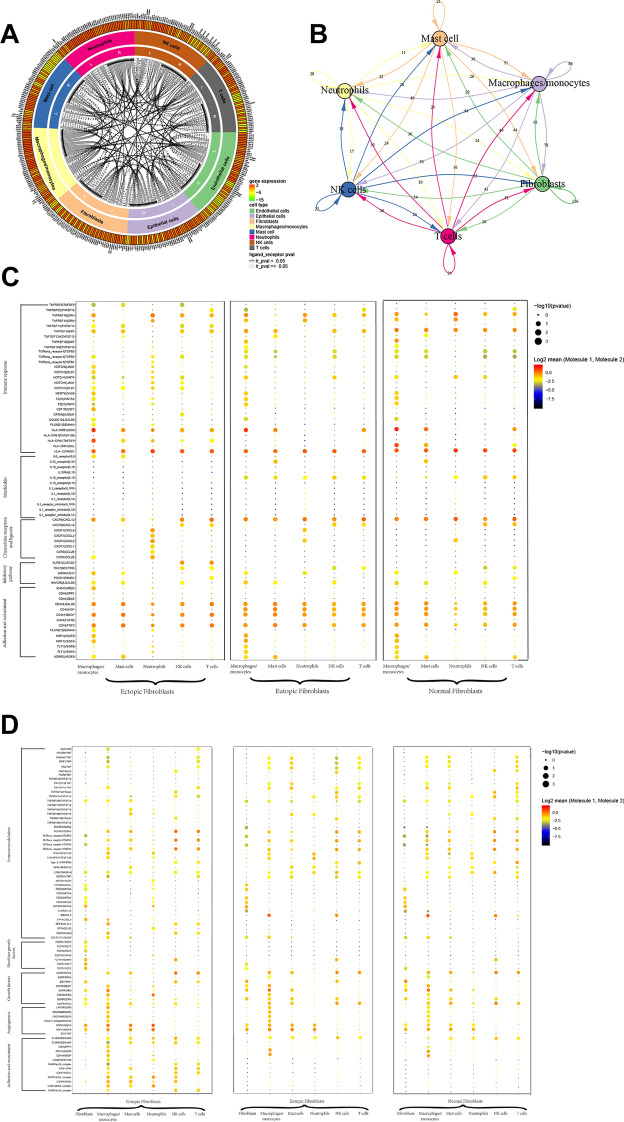Fig. 8.
The dense network and multiple cellular connection in endometriosis. A Putative signalling between differentially expressed receptors in different cell types and their ligands. Compartments represent cell types, and their preferentially expressed receptors and ligands were labelled along the outer margin. The solid line indicates a significant interaction, while the dashed line, no significant interaction. The communication network of eutopic endometrium and normal endometrium is shown in Additional file 1: Fig. S9. B Capacity for intercellular communication among FBs and immune cells. Each line colour indicates the ligands expressed by the cell population represented in the same colour (labelled). The lines connected to the cell types that expressed the cognate receptors. The line thickness was proportional to the number of ligands when cognate receptors were present in the recipient cell type. C, D Overview of selected ligand–receptor interactions of FBs, macrophages, NK cells, T cells, mast cells and neutrophils. P values are indicated by circle size, with the scale to the right (permutation test)

